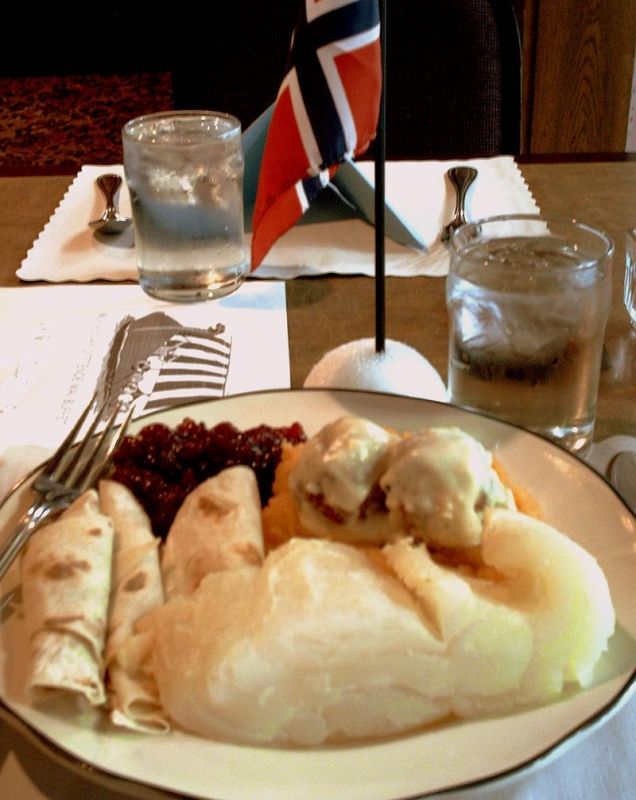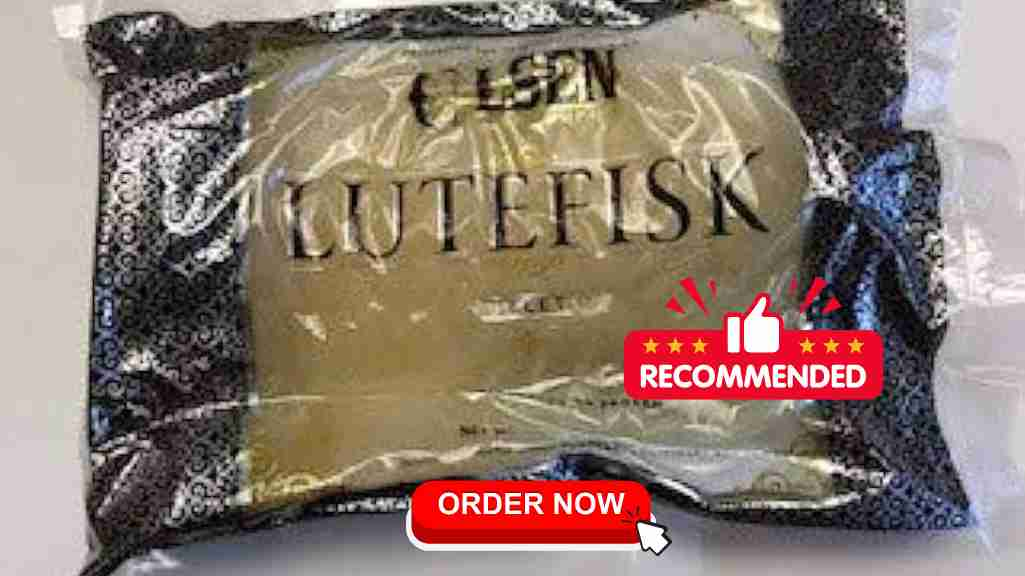Author: Jorgenson Family Clan

Lutefisk is a traditional dish of the Nordic countries made from air-dried whitefish and soda lye. In Norway and Sweden, it is called lutfisk, while in Finland it is known as lipeäkala.
Its name literally means “lye fish”, owing to the fact that it is processed with caustic soda or potash lye.
LUTEFISK RECIPE Preparation
First of all, invite brave people over for dinner who do not have misconceptions about this wonderful fish and will not blab it all over the neighborhood, other wise everyone will want to come!
Next, go to a store that carried the freshest of fish and seafood. Ideally, you would get the lutefisk that they pull out of a barrel, but most stores hate those barrels a lot and don’t do that anymore. Second best and last resort, it comes skinless and “trimmed” and packaged in a plastic. Armed escorts can be hard to find to secure your safety in getting your prize home safely so plan ahead.
Purchase the lutefisk a day before you want to serve it. Take it out of the plastic bag, put it in a large bowl, and cover with ice water. Change this water two to three times and keep in the refrigerator (if your family will let you). This firms up the fish.
In Minnesota, we allow at least a pound of lutefisk per person, served with hot melted butter. The two side dishes are riced potatoes and very small cooked frozen peas – no exceptions.
And, of course, you must have lefse. This is a ritual which we try to repeat as often as possible and as long as we can get the fresh lutefisk.
Lutefisk is made from a dried cod (whitefish) in Norway, but ling is also used and prepared with lye in a sequence of particular treatments. The watering steps of these treatments differ slightly for salted/dried cod because of its high salt content.
The first treatment is to soak the cod fish in cold water for five to six days changing the water daily. The saturated cod fish is then soaked in an unchanged solution of cold water and lye for an additional two days. The fish swells during this soaking, and its protein content decreases by more than 50 percent, producing its famous jelly like consistency. In many places this is already done by the grocer or supplier.
In Finland, the traditional reagent used is birch ash. It contains high amounts of potassium carbonate and bicarbonate, giving the fish a more mellow treatment than would lye. It is important to not incubate the fish too long in the lye because saponification of the fish fats may occur. The term for such spoiled fish in Finnish is saippuakala (soap fish).
When we purchase the lutefisk at the local grocery store it is best to give this soaking treatment one more step as the cod could still be saturated with lye and may still have a very high pH of around 12 which is very caustic. To make the cod fish so we can eat it, we have one last step of another four days of soaking in cold water salt which is also changed daily. Get a pot large enough to hold all of your fish plus enough water to completely cover the fish. Put a 1/2 layer of salt then a slab of fish and then another layer of salt and another slab of fish etc until you have all of the fish in the pot covered with water. Do this for the four day cycle and keep the fish in a cool place and make sure the cats don’t find it. This process helps to restore some firmness to the fish. Eventually, the lutefisk is ready to be cooked.
LUTEFISK RECIPE Cooking Note: If your lutefisk looks like a clear runny jelly when it is served it was prepared WRONG!! Don’t eat it!!
After the preparation, the lutefisk is saturated with water and must therefore be cooked carefully so that it does not fall into pieces. If one likes to have the lutefisk more firm in its consistency, one can spread a layer of salt over the fish half an hour before it is cooked. This will “release” some of the water in the fish meat. The salt must be rinsed off before cooking.
Lutefisk must be served hot on piping hot plates. Accompaniments vary from bacon or pork drippings, white sauce, mustard sauce, or melted butter which seems to remain a favorite. Boiled and steamed potatoes, stewed whole, dry green peas are a must as a vegetable accompaniment. The only other necessary additions are freshly ground pepper, lefse, or flatbread. In some parts of Northern Norway, lutefisk is served with melted goat cheese.
There are several ways to cook lutefisk:
Baking in foil: Heat oven to 400 degrees F. Skin side down, arrange lutefisk on a sheet of double aluminum foil and season with salt. Wrap foil tightly about fish and place on rack in a large pan and bake 20 minutes. Cut corner from foil and drain out excess water. Serve at once.
Lutefisk does not need additional water for the cooking; it is sufficient to place it in a pan, salt it, seal the lid tightly, and let it steam cook under a very low heat for 20–25 minutes. An alternative is to wrap in aluminum foil and bake at 435 °F for 40–50 minutes.
Another option is to parboil lutefisk; wrap the lutefisk in cheesecloth and gently boil until tender. This usually takes a very short time, so care must be taken to watch the fish and remove it before it falls apart. Prepare a white sauce to serve over the lutefisk. In my opinion this is the jelly maker method!! Steep for 5 to 10 minutes depending on thickness. Serve at once.
Lutefisk can also be boiled the old fashioned way directly in a pan of water. Fill the pan 2/3 full with water, add 2 ts of salt per liter water, and bring the water to a boil. Add lutefisk pieces to the water until they all are covered with water, and let it simmer for 7 to 8 minutes. Carefully lift the lutefisk out of the water and serve. Steep for 5 to 10 minutes depending on thickness. Serve at once.
Lutefisk can also be cooked in a microwave oven. The average cooking time is 8–10 minutes per whole fish (a package of two fish sides) at high power in a covered glass cooking dish, preferably made of heat resistant glass. The cooking time will vary, depending upon the power of the microwave oven.
LUTEFISK RECIPE IMPORTANT: Do not cook in aluminum vessels as it will darken the kettle. When cooking and eating lutefisk, it is important to clean the lutefisk and its residue off pans, plates, and utensils immediately. Lutefisk left overnight becomes nearly impossible to remove. Sterling silver should never be used in the cooking, serving or eating of lutefisk, which will permanently ruin silver. Stainless steel utensils are recommended instead. Author: Jorgenson Family Clan





















I used to have a recipe for Lutefisk. It started with cutting down a birch tree. It also requires super fresh fish. Once the fish is cleaned it is hung to dry. Once it is dried the luting can begin.